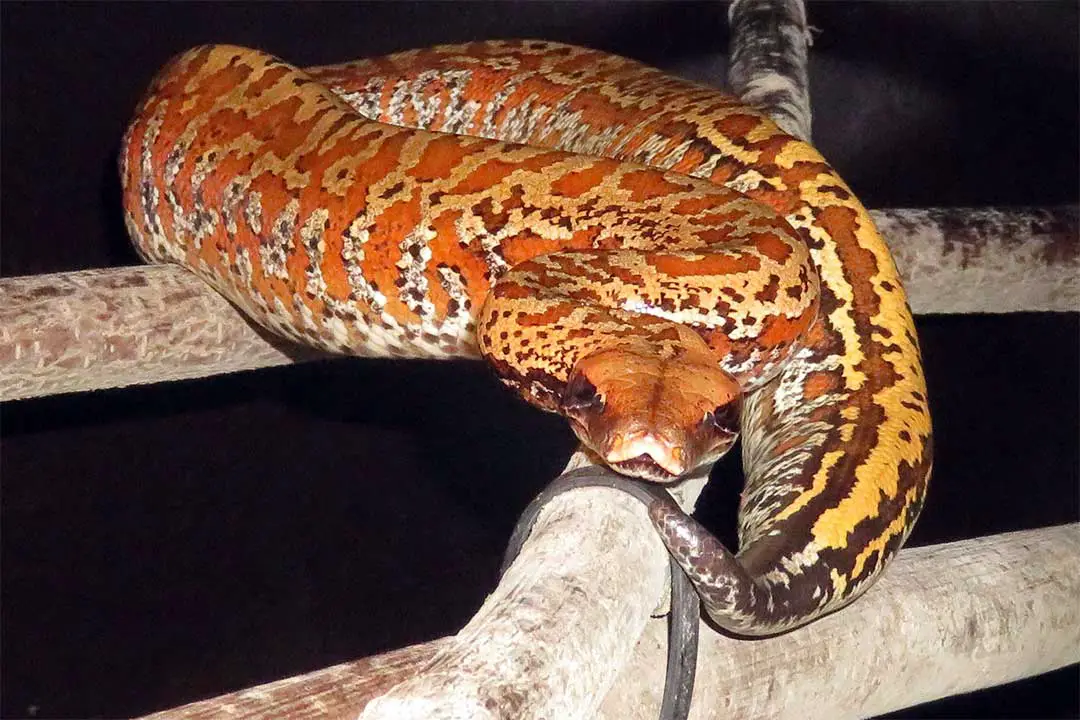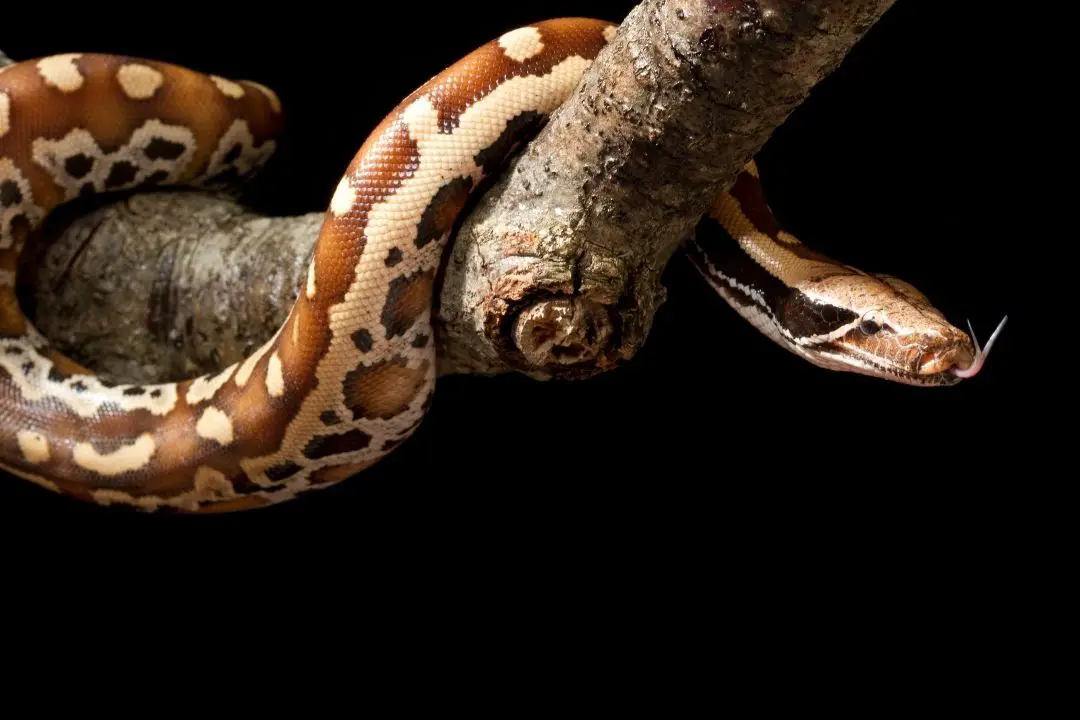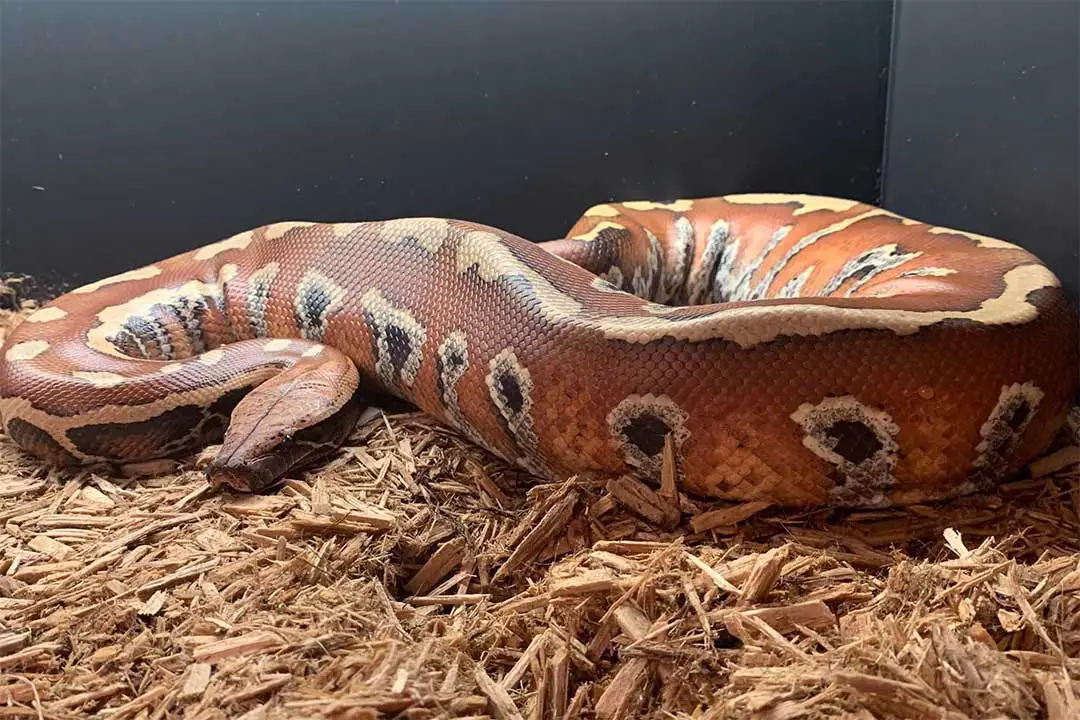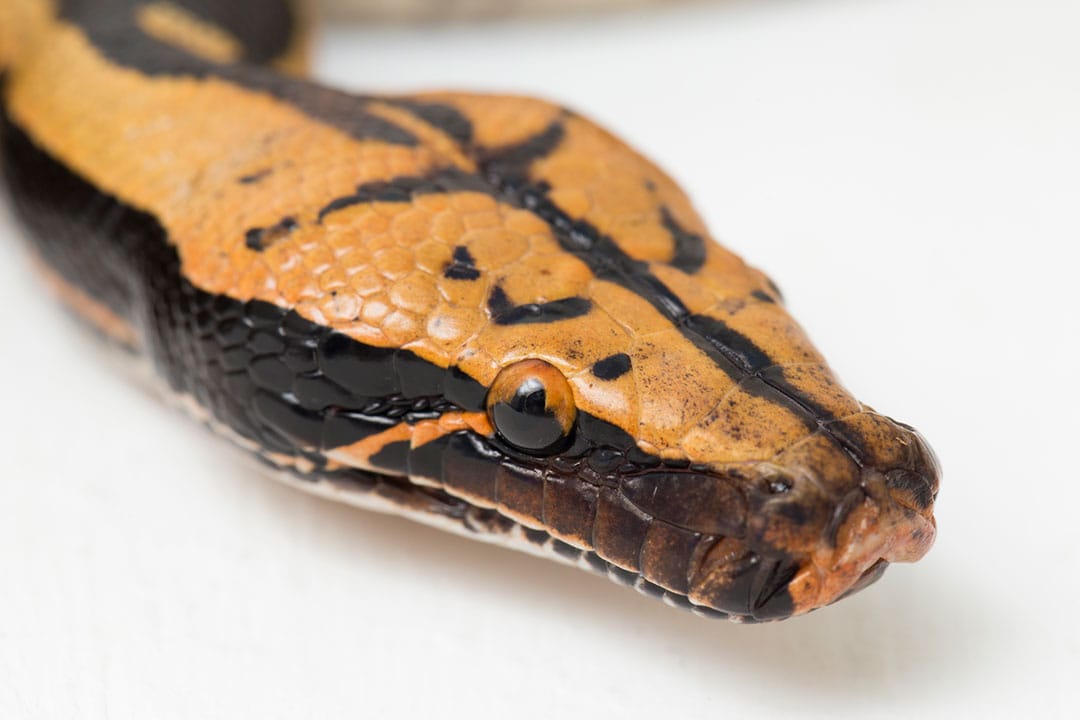The blood python (Python brongersmai) is a very heavy-bodied snake that originates in South East Asia. These snakes are known for hunting in water.
If you have one of these snakes as a pet, you may be wondering if blood pythons enjoy climbing in captivity like other pythons.
So, do blood pythons like to climb?
Blood pythons will climb if they have the opportunity. Their belly scales are structured to allow them to climb trees. While they are very heavy animals, they will take the chance to climb on top of their hide or any branches. Provide plenty of sturdy climbing structures.
In the Wild
Blood pythons spend their lives in swampy lowlands. They spend most of their time in the water, waiting to ambush prey.
While these snakes are ambush hunters, they are more active than you would think. Ambush hunters spend a long time searching for a good place to wait for prey.
Pythons like the blood python use their strong sense of smell to find likely areas to set up their ambush. Since they can smell areas prey frequents, they can wait near common paths and watering holes.
Blood pythons will climb over obstacles to help find a good place to wait.
In Captivity
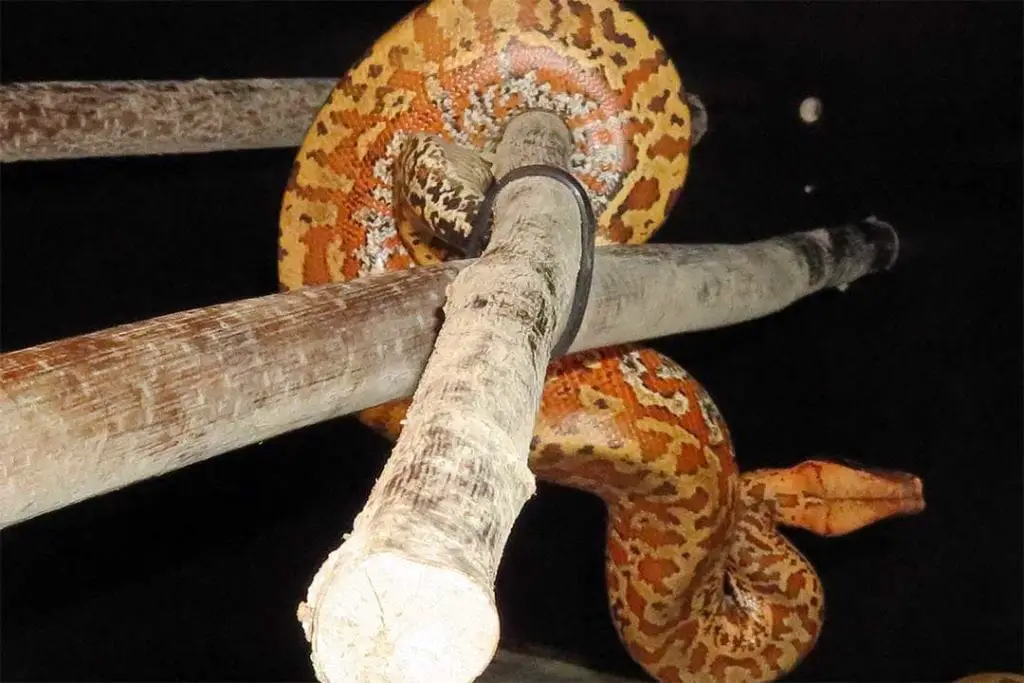
Everything you need to know about caring for Blood Pythons in captivity:
Read our Blood Python Care sheet (Complete Setup & Guide)
In captivity, your blood python will spend most of its time hiding away or thermoregulating. Since these snakes are nocturnal, you will likely not see them much.
They may seek out water, move to a damp hide, or switch sides to be more comfortable. At night, they can be much more active.
Snakes are curious animals and most will investigate any changes to their enclosure as soon as the light level goes down.
If you have a night-vision camera, point it at the enclosure. You will likely see your snake move around the enclosure.
If you have changed or moved anything, they will go over to check out any new smells. Hungry pythons will also be looking for prey.
They will spend time checking for any signs of rodents so they can set up an ambush. Most blood pythons will climb over and on anything that will support their weight.
They might not utilize a branch if it is too thin or poorly secured. If you want to provide enrichment by allowing for climbing behaviors, you will need to make sure everything is secure.
Even if you do this, your snake may not choose to climb much. This depends on the individual animal. Some snakes that have taken a nasty fall are also less willing to climb.
Setting Up Climbing Structures
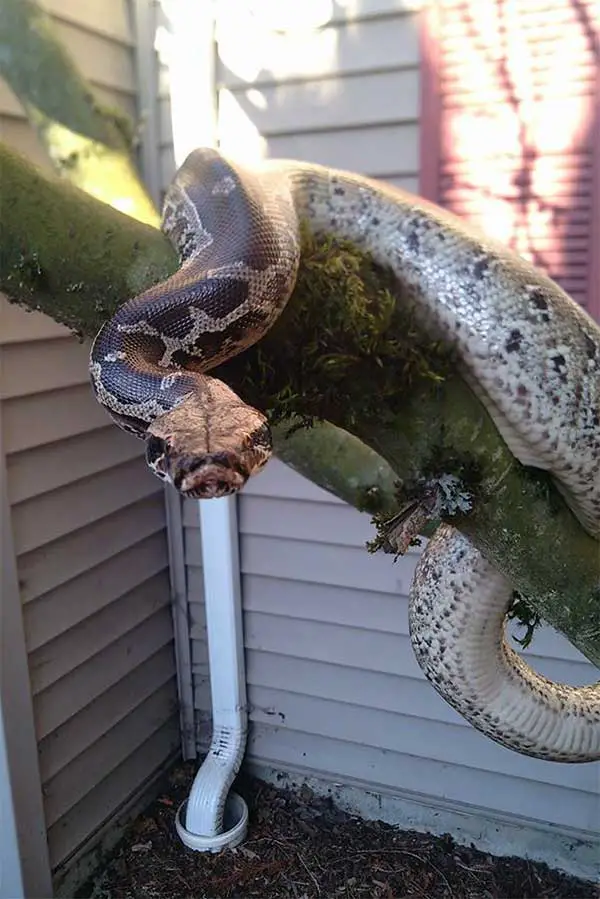
The first step to offering your snake climbing structures is knowing how much weight you need to support.
A hatchling will be happy with light branches. Once the snake starts putting on weight, you need to provide stronger furnishings for your snake.
Look for strong hides that can take the snake climbing on it. Your snake may decide that the top of the hide looks like a great place for a nap if it feels secure in the enclosure.
Sturdy plastic and ceramic are good choices for these hefty animals. Just make sure there are no sharp edges to potentially injure your pet. You will also want very sturdy branches.
These need to be set so they can’t tip over even if your snake is climbing all over it. You will want something thick and strong so it can handle the weight.
Look for surfaces that are a bit rougher. Snakes cannot climb smooth surfaces well. You may find bird perches that have sand on them.
Do not use these for snakes since they can damage their skin or scales. Any branches you add should be free of herbicides and pesticides. You will also want to sanitize them so your snake does not risk picking up a disease.
You can also provide things like rocks for your snake.
These should be fully sanitized before you offer them to your pet. Make sure you do not use an electric heat rock, since these can burn snakes. A mostly smooth rock is great for allowing a snake to rub off its old skin during shedding.
You can also offer either real plants or artificial greenery. Just make sure it can handle a snake climbing on it. Some artificial plants are fragile and may have coatings that can hurt a reptile.
Real plants can be crushed by your snake’s weight. Look for something that will do well in an enclosure. You will also want to make sure your decorations will fit.
Keep an eye on measurements of items and keep a note of your enclosure height. Enclosures shorter than 18 inches can be difficult to add enough climbing options.
After all, you will have 4 inches of substrate and then the item you want your snake to climb. Then, there needs to be room for your snake to fit.
A hide that will hold an adult blood python can be very tall, so if your snake wants to climb, it will need a taller enclosure. Keep an eye on your snake and see what it prefers to use in its enclosure.
Some snakes want plenty of climbing choices, others want more room to stretch out or extra hides.
Summary
Blood pythons do frequently enjoy climbing. Offer your snake plenty of options to exhibit this natural behavior. Keep an eye on what your snake seems to prefer, and you can make an enclosure your pet will love. If you have any comments or questions, please leave them below.
